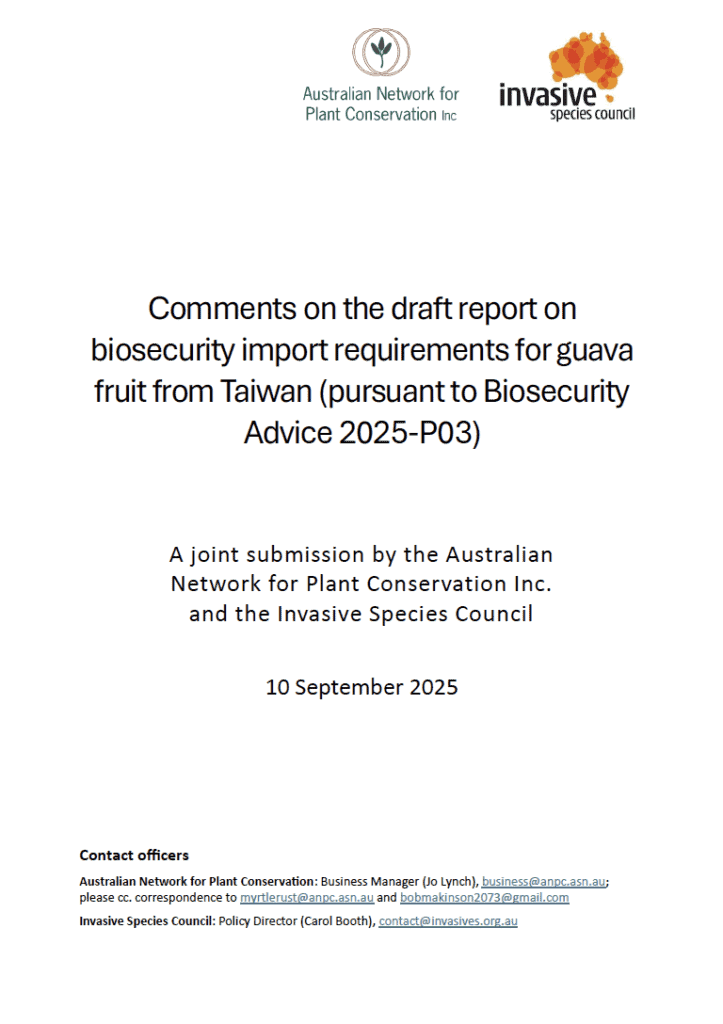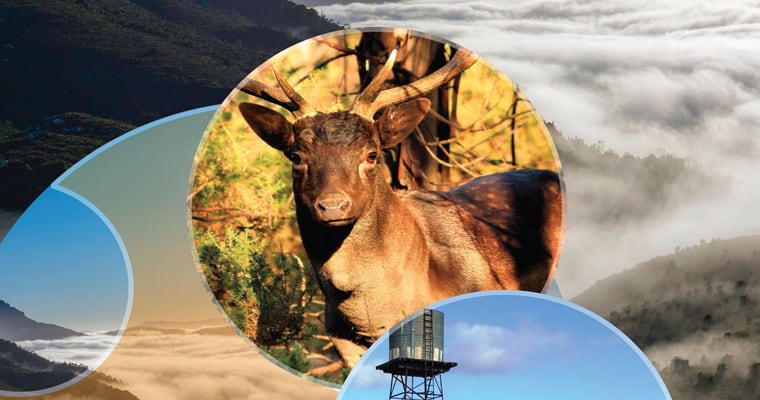A joint submission by the Australian Network for Plant Conservation Inc. and the Invasive Species Council.

The Biosecurity Import Requirements Draft Report issued with Biosecurity Advice 2025-P03 recommends allowing the importation of commercially produced fresh guava fruit (Psidium guajava) from Taiwan. The Draft Report excludes Myrtle Rust (Austropuccinia psidii) from risk assessment on the grounds that it is not present in Taiwan.
We argue that this finding was not well justified – a concern validated by the confirmed occurrence of Myrtle Rust in Taiwan, reported after the Draft Report’s publication. Although DAFF now proposes to conduct a risk assessment of Myrtle Rust, we provide here a critique of the original decision to exclude Myrtle Rust from assessment:
- Historical evidence for presence: The Draft Report too cursorily dismissed a 1991 Taiwan detection as ‘unreliable’, based on attenuation or misinterpretation by secondary sources.
- Other evidence for presence: Relying on a lack of recorded presence as an indicator of absence is not a reliable approach for a highly mobile pathogen like Myrtle Rust. The assessment failed to consider the implications of its rapid spread across the Pacific region since 2005, including recent detections in neighbouring countries: Japan (2007) and southern China (2009, 2024).
- Process concerns: The assessors did not consult with the National Myrtle Rust Working Group before concluding that this high-priority biosecurity threat required no risk assessment.
We suggest there are grounds for a review of the approach to pre-assessment categorisation, and the depth of assessment performed and reported, particularly for environmental pathogens.
We also provide information germane to the forthcoming risk assessment:
- Fruit morphology: Some Guava varieties have terminal pits that could harbor spores and evade cleaning.
- Internal infection: Myrtle Rust can infect fruit internally without visible external symptoms.
We urge the assessors to consider in detail the risks of introducing different strains of Myrtle Rust –whether new strains pathogenic to additional hosts or the existing pandemic strain, not yet present in Western Australia and South Australia. We urge consideration of the risks of introducing multiple variants that could lead to genetic recombination, expanded host ranges and more severe impacts.








